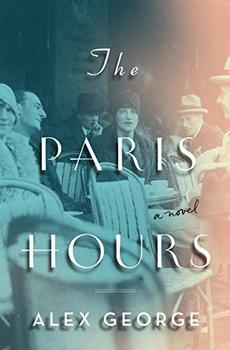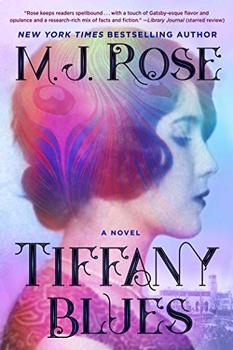Summary | Excerpt | Reading Guide | Reviews | Beyond the book | Read-Alikes | Genres & Themes | Author Bio

The wonder of Francine Prose's terrific historical novel, Lovers at the Chameleon Club, Paris 1932, is how she takes inspiration from a work of visual art and builds, not just one story, not just one voice, but a kaleidoscope of voices and angles about individuals whose lives intersect at a particular time and place. The visual piece is a gelatin silver print by famed Hungarian photographer Brassai called "Lesbian Couple at Le Monocle, 1932." It shows two people having cocktails and cigarettes seated at a cabaret table. One is a woman in a diaphanous evening gown and the other is also a woman, but she is dressed in a tailored man's suit, shirt and necktie. It is perhaps as evocative of Paris during the Jazz Age as any picture and it has clearly evoked brilliance in this author.
The main character in Lovers is the mannish woman depicted in a similar, fictional photograph, Louisianne (Lou) Villars. Lou's story is told via excerpts taken from a divertingly amateurish biography penned by the niece of one of Lou's acquaintances.
Born in rural France with an athletic rather than "feminine" physique, Lou always feels out of place. Her parents send her to boarding school where she begins training for Olympic javelin throwing under the strict tutelage of a rather unsavory character who eventually exploits and molests her. She narrowly escapes and flees to a Paris nightclub called the Chameleon Club where owner Yvonne immediately welcomes her. The club is a bizarre microcosm of Parisian society's misfits, prostitutes, cross-dressers and malcontents where Lou checks coats, waits tables, even performs onstage. "She knew that…Yvonne had created this place for her and others like her; born into the wrong life, the wrong body, an innocent victim of God's mistake."
Among the people she encounters at the Chameleon Club is a young Hungarian photographer-sometimes-journalist named Gabor Tsenyi (modeled on real-life photographer Brassai) who tells his own story – his view of events – in the form of cloying, obsequious letters to his parents. He portrays himself as a dutiful son so his parents will keep sending him cash even though he's enjoying the nightlife and the whole counterculture scene. "I swear my only desire was to photograph Yvonne and her clientele. It was entirely about my art; the basis of your faith in me and your generous stipend, the tuition you are paying to what Papa calls the art school of life."
Prose brings in the voice of an expat American journalist Lionel Maine with excerpts from books he eventually publishes about those halcyon-turned-nightmarish days between the wars. Distinct from the others, Maine brings a rather more jaundiced eye to the craziness and its celebrants. When Gabor publishes a book of his photos Maine notes, "I might humbly suggest that one reason for his book's popularity is that Gabor has arranged the perfect union of serious art with the ever-beloved dirty French postcard."
And so the stories ensue with a medley of deliciously unreliable narrators told, by turns, in the unique voices of Yvonne and Gabor; of his patron, wealthy baroness Lily De Rossignol; of Lionel Maine; and of Gabor's wife, Suzanne and her niece, Lou's biographer. Honestly, Prose's writing is so striking in its own chameleon-like ability to adjust to the diverse points of view and voices that that quality alone makes this a worthwhile read. But she recreates a world that very nearly vibrates with the jazzy notes of a saxophone as Paris parties its way into occupation, assisted by the sad outcast Lou Villars.
![]() This review was originally published in The BookBrowse Review in May 2014, and has been updated for the
May 2015 edition.
Click here to go to this issue.
This review was originally published in The BookBrowse Review in May 2014, and has been updated for the
May 2015 edition.
Click here to go to this issue.

If you liked Lovers at the Chameleon Club, Paris 1932, try these:

by Alex George
Published 2021
Told over the course of a single day in 1927, The Paris Hours takes four ordinary people whose stories, told together, are as extraordinary as the glorious city they inhabit.

by M.J. Rose
Published 2019
The New York Times bestselling author of The Library of Light and Shadow crafts a dazzling Jazz Age jewel—a novel of ambition, betrayal, and passion about a young painter whose traumatic past threatens to derail her career at a prestigious summer artists' colony run by Louis Comfort Tiffany of Tiffany & Co. fame. "[M.J. Rose] transports the ...
Judge a man by his questions rather than by his answers.
Click Here to find out who said this, as well as discovering other famous literary quotes!
Your guide toexceptional books
BookBrowse seeks out and recommends the best in contemporary fiction and nonfiction—books that not only engage and entertain but also deepen our understanding of ourselves and the world around us.